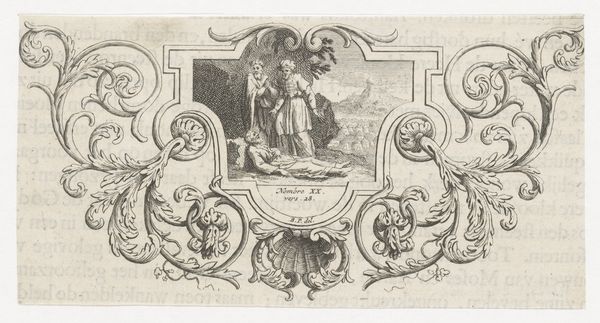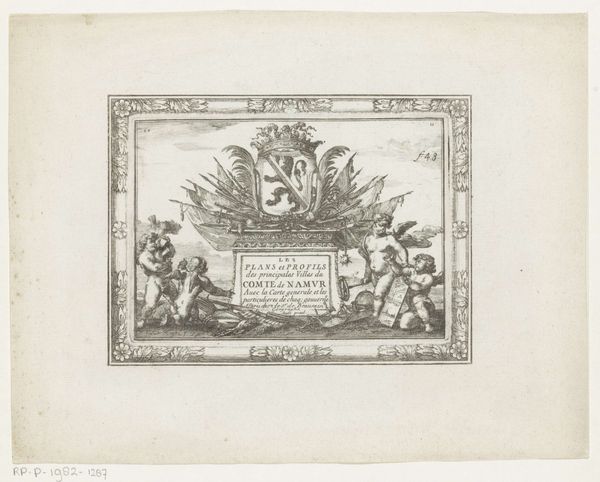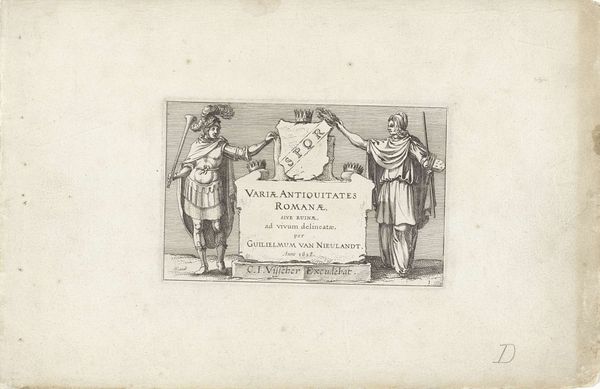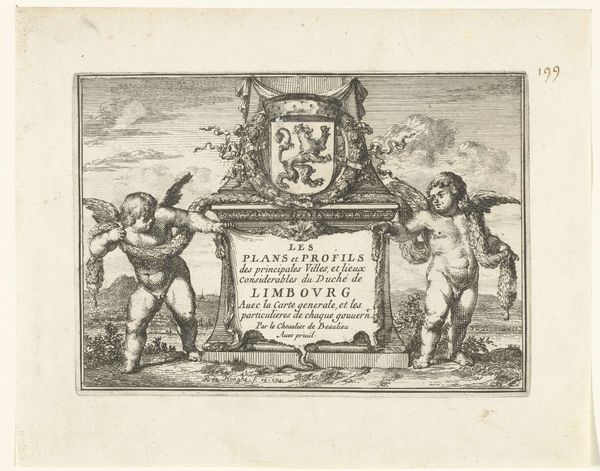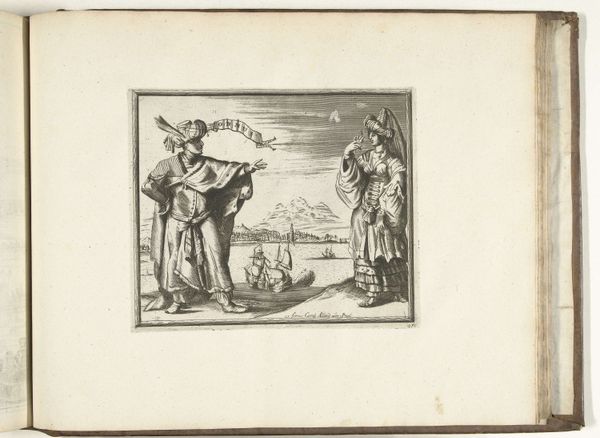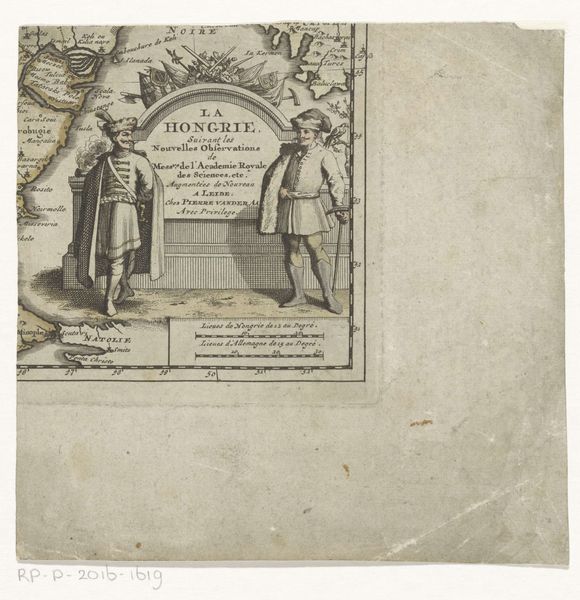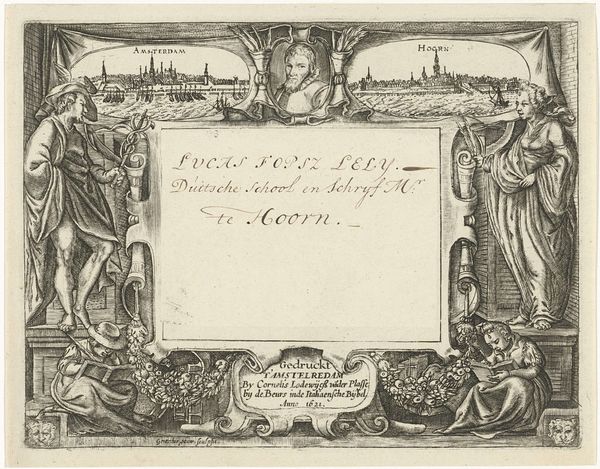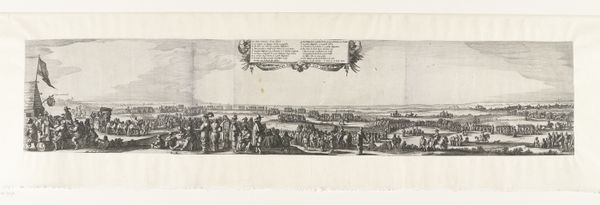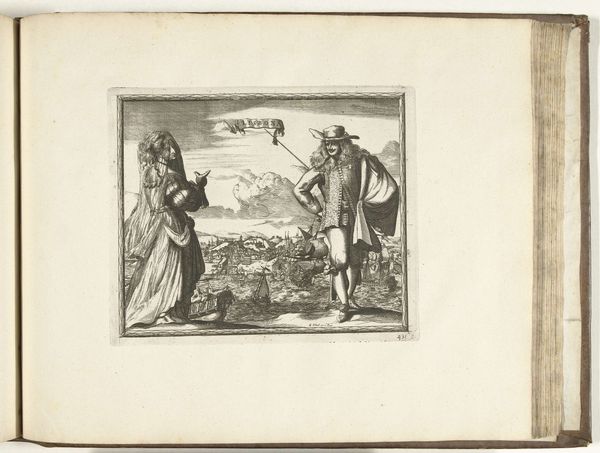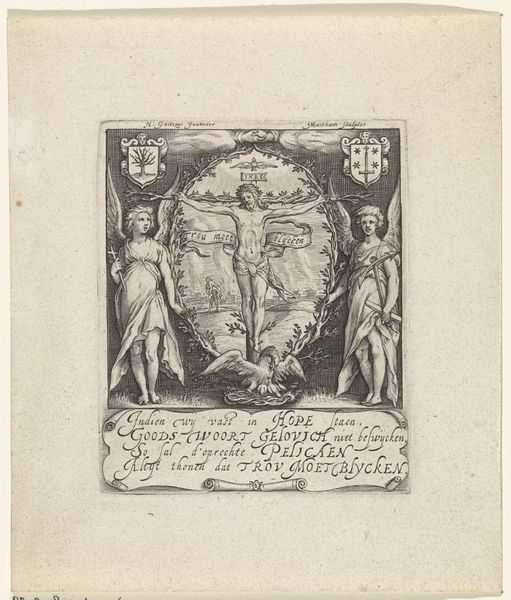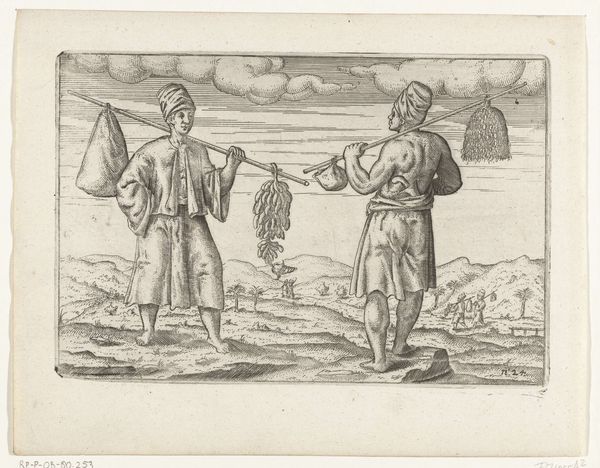
print, etching, engraving
#
baroque
# print
#
etching
#
landscape
#
figuration
#
genre-painting
#
history-painting
#
engraving
Dimensions: height 181 mm, width 298 mm, height 77 mm, width 188 mm
Copyright: Rijks Museum: Open Domain
This print, ‘Titelprent met twee jagers’, was made in 1649 by an anonymous artist. It is a small, delicate work, created through the process of etching. The etched lines define the forms of the two hunters, their dogs, and the landscape behind them. But the real story here is in the process, and what that process represents. Etching is an indirect method; the artist covers a metal plate with a waxy ground, draws through it to expose the metal, and then bathes the plate in acid. This eats away at the exposed lines, leaving an image that can then be printed. Consider the social context of this work. The availability of paper, the skills of the etcher, and the existence of a market all point to a sophisticated economic system. The print could be reproduced, bought, and sold, reaching a much wider audience than a unique painting ever could. The labor of the artist, the printer, and the seller all contributed to its existence. So, next time you look at a print, don’t just see the image; think about the many hands that brought it into being, and the economic and social systems that made it possible.
Comments
No comments
Be the first to comment and join the conversation on the ultimate creative platform.
